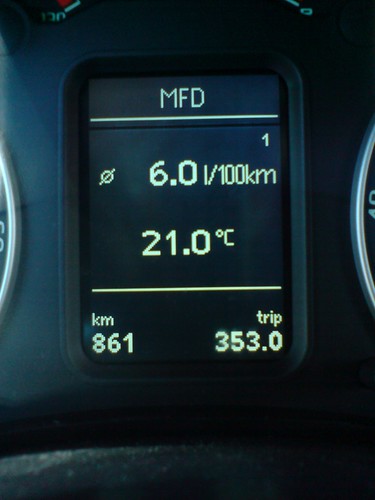Friday, April 17, 2009 – ISSN 1529-1057
Daily Twitter Updates for TCN
If you’d like a preview of what’s coming up in the TCN, you can now follow me on Twitter at http://twitter.com/brwagenblast.
AVIATION
1) The FAA and the Freedom of Information Act
Link to column in The Dallas Morning News:
http://watchdogblog.dallasnews.com/archives/2009/04/the-faa-and-the-freedom-of-inf.html
2) Logan Airport to Try High-Tech Bird-Detection System
Link to story on WBZ-TV:
http://wbztv.com/local/bird.detection.system.2.986910.html
3) Delta No Longer Sending Reservation Calls to India
Link to AP story:
http://finance.yahoo.com/news/Delta-no-longer-sending-apf-14957481.html?.v=3
GPS / NAVIGATION
4) GPS Units Plug Into the Web, but We’re Not There Yet
Link to column in The Washington Post:
http://www.washingtonpost.com/wp-dyn/content/article/2009/04/17/AR2009041700047.html
MARITIME
5) Maritime Academy Simulates Pirate Attacks
Link to story and video report on KGO-TV:
http://abclocal.go.com/kgo/story?section=news/local/east_bay&id=6765847
6) US Government Accountability Office Urges Review of Ship-Tracking Plans
Link to story in Federal Computer Week:
http://fcw.com/articles/2009/04/17/web-tracking-ships.aspx
Link to GAO report: http://www.gao.gov/new.items/d09337.pdf
ROADWAYS
7) For Massachusetts Pike Chief, Tact Not Part of the Job
Link to story in The Boston Globe:
http://www.boston.com/news/local/massachusetts/articles/2009/04/17/for_pike_chief_tact_not_part_of_the_job/
TRANSIT
8) ‘Suicide’ Ad Irks Toronto Transit Authority
Link to story in The Globe and Mail:
http://www.theglobeandmail.com/servlet/story/RTGAM.20090417.wsubway17art12247/BNStory/National/home
TRAVELER INFORMATION / TRANSPORTATION MANAGEMENT
9) Intelligent Transportation Projects Get Stimulus Funding
Link to story in Government Technology:
http://www.govtech.com/gt/articles/641154
10) Profile of San Francisco Traffic Reporter Liz Saint John
Link to column in the San Francisco Chronicle:
http://www.sfgate.com/cgi-bin/article.cgi?f=/c/a/2009/04/17/PKDQ16V7SU.DTL
11) Technologies that Compliment Congestion Pricing – A Primer
Link to publication from the Federal Highway Administration:
http://www.ops.fhwa.dot.gov/publications/fhwahop08043/cp_prim3_00.htm
12) Best Practices in Traffic Incident Management
Link to draft report from the Federal Highway Administration:
http://www.nasemsd.org/Projects/HITS/documents/tim_best_practices2.pdf
VEHICLES
13) Pay Up or Your Car Engine Will Stop
Link to AOL Autos story:
http://edition.cnn.com/2009/LIVING/wayoflife/04/17/aa.bills.shut.engine.down/
News Releases
1) HelloFlight.com Announces ‘Exclusive/First-Time Available to Public’ FAA Online Flight Tracking Tools
2) The 7,000km Long, Four Terabyte ‘Gadget’ that Keeps the UK on the Move
3) Toyota to Show Infrastructure-Linked Driving Safety Systems
Job Posting
– General Engineer – Volpe National Transportation Systems Center – Cambridge, Massachusetts
http://jobsearch.usajobs.gov/getjob.asp?JobId=80513390&AVSDM=4%2F17%2F2009+3%3A43%3A04+PM
Upcoming Events
Performance Measures – A Case Study in Progress Webinar – May 6
http://www.pcb.its.dot.gov/t3/s090506_perfmeas.asp
Friday Bonus
Here’s a way to kill two birds with one stone. You can save money AND calm traffic!
http://news.bbc.co.uk/1/hi/england/essex/8001310.stm
Today in Transportation History
April 17, 1964 **45th anniversary** – Ford introduced the Mustang at the New York World’s Fair.
http://www.youtube.com/watch?v=NFWS2aIAOpQ
=============================================================================================
The Transportation Communications Newsletter is published electronically Monday through Friday.
To subscribe send an e-mail to: TCNL-subscribe@googlegroups.com
To unsubscribe send an e-mail to: TCNL-unsubscribe@googlegroups.com
TCN archives: http://groups.yahoo.com/group/transport-communications
Questions, comments about the TCN? Please write the editor, Bernie Wagenblast at i95berniew@aol.com.
© 2009 Bernie Wagenblast



 In forgoing the loan, Chrysler Financial opted to use more expensive financing from private banks, adding to the burdens of the already fragile automaker and its financing company.
In forgoing the loan, Chrysler Financial opted to use more expensive financing from private banks, adding to the burdens of the already fragile automaker and its financing company.




